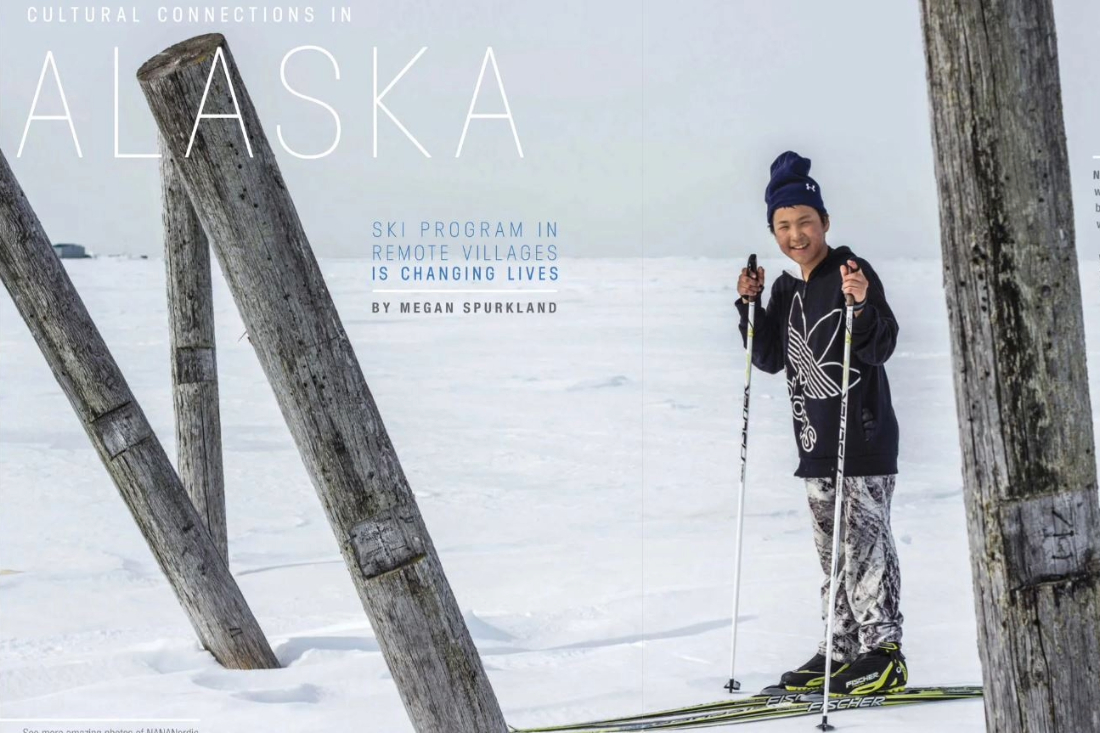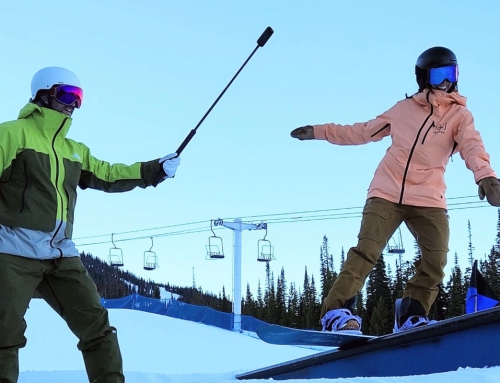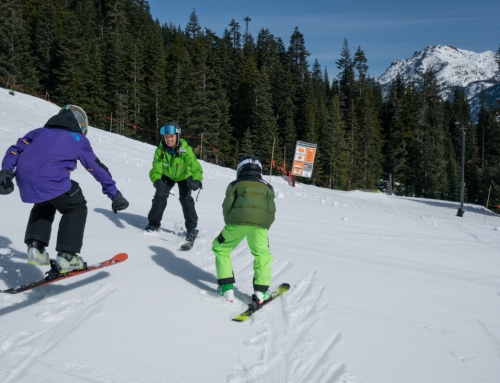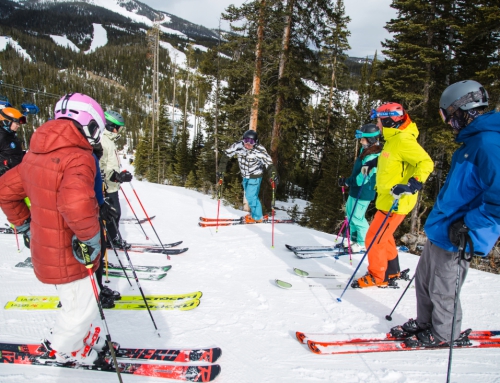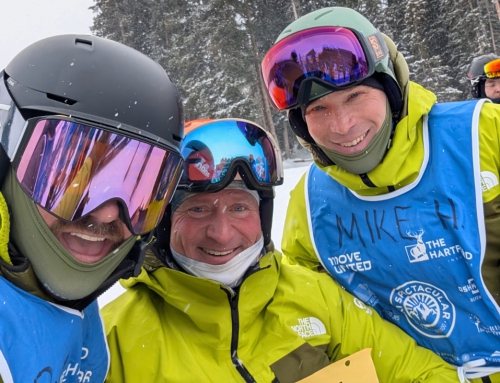From the Archives: “Cultural Connections in Alaska”
For this installment of “From the Archives,” we go back a decade to the Fall 2014 issue of 32 Degrees, with an insightful feature by former PSIA Cross Country (then Nordic) Team member Megan Spurkland on instructing in Alaska Native villages.
***
No one told me what to expect when you put an eighth-grade lnupiat boy on cross country skis during whaling season above the Artic Circle. Here is what happens: He will watch carefully and quietly and learn to push himself along on the frozen, windblown lagoon that separates his tiny village of 350 people from the mainland. He will slowly gain confidence moving his legs, bending over a little too far at the waist. Once he feels stable, his eyes focus on the horizon or the sea ice. He pulls up the ruffed hood of his white hunting parka and double-poles toward the edge of open ocean. Your heart beats fast because you’re balancing in an unknown land as an instructor and also a visitor to an almost foreign culture. You are scared of the ice edge, but he is not. So you follow carefully, entranced because you’re witnessing an ancient activity . . . being performed on brand-new Fischer skis.
You want to make sure he is safe but hang back, wanting to learn what is drawing him out there. He double-poles quietly and attentively and you slowly come to understand that he is scanning the horizon for the breath of a bowhead, the white flash of a beluga, or the shiny eyes of a bearded seal. You choose to trust his experience and watch him carefully sidestep up an angular jumble of ice, standing magnificently at the top, leaning onto his ski poles and staring out over the leads that run jagged out to open water.
You started by teaching him how to ski, and you end up learning the patience and silence with which he was taught to hunt for food.
A Program with Purpose
No one told me I would fall in love with coaching skiing in Alaska Native villages this past spring. That, however, is exactly what happened when I served as a volunteer instructor on two week-long trips with a program called NANANordic.
Alaska native lands were divided into 12 regional corporations in 1971 in the Alaska Native Claims Settlement Act, and one of these regions of the northwest arctic is called the NANA region. Hence the name for an innovative program dedicated to getting all the school kids in Alaska on skis. When it operates within the NANA region, it’s called NANANordic; where it has expanded outside of the NANA region, it’s called Skiku. It is headed up by two-time Olympian Lars Flora, who retired from cross country ski racing in 2011 and revived and enlarged a program that had previously been bringing skis to the villages. This year the program visited 26 villages and got 3,000 students on skis!
Some of the villages already have thriving cross country ski programs, and the arrival of volunteer coaches adds variety to their practice. ln other villages, this is the first time the kids have seen skis. The coaches on each trip are an amazing group; Lars and his fellow organizers, the mother/daughter team of Robin and Tamra Kornfield, carefully construct groups of four to five that are a combination of Olympic and World Cup skiers, United States Ski Team members, citizen coaches, and even junior racers. This year, more than 80 volunteer coaches from all over the United States took part. And in June, NANANordic won second place in the 2014 FIS SnowKidz Awards, which recognizes the best examples – worldwide – of bringing children to snow. (One of the members of the three-person jury is Riet Campell, president of the International Ski instructors Association).
NANANordic/Skiku is tremendously successful, evidenced not only by the unending enthusiasm for skiing that the kids demonstrate (you cannot get them to stop skiing, sometimes even after seven hours!), but also by the overwhelmingly positive response from all the coaches who have volunteered their time. Buoyed by the reception they get and the experiences they gather, coaches come back from the trips with huge smiles and are ready to go out again.
I believe this is because it is a cultural exchange. Instructors share their skiing culture and gain an understanding of how Alaskan Natives are combining tradition and technology to thrive in tiny outposts surrounded by endless wilderness. Each party is so excited to be immersed in the other’s culture that a simultaneous exchange happens and everyone parts ways with gratitude.

